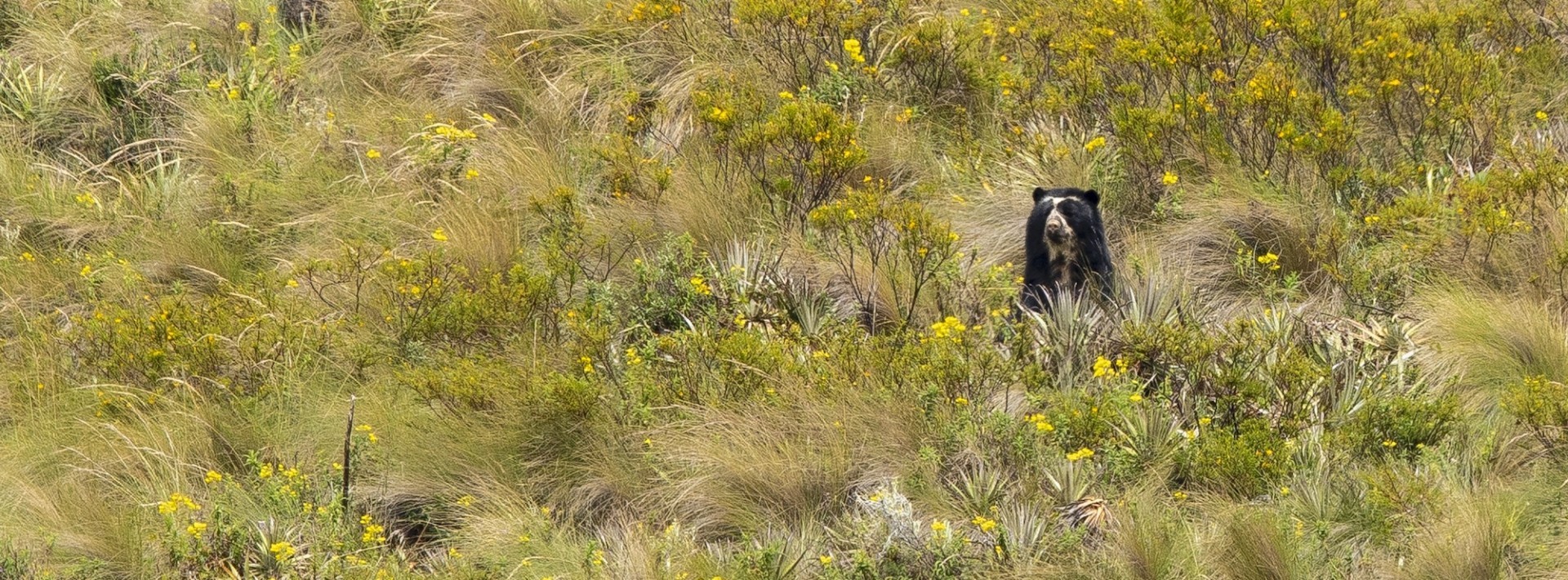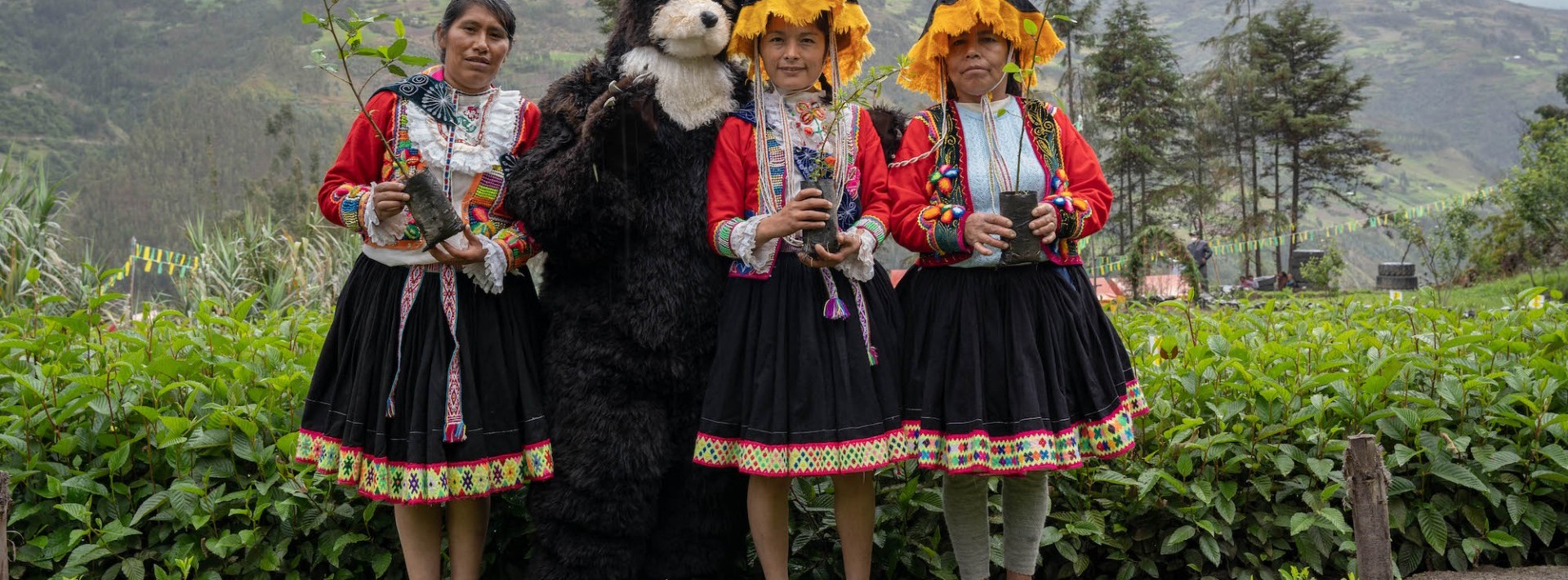In Brief
Conservation Value:
The vast scale of Manú National Park, in southwestern Peru—spanning Andean highlands, cloud forest, and lowland Amazonian forest—makes it a stronghold for apex predators and species with large home ranges or that are rare and widely distributed. The elevational range of Manú, from 300 feet to 11,000 feet above sea level, enhances its importance for the ability of species to adapt to climate change. The Andean bear (‘Ukuku’ in Quechua) is a cultural icon for the Quechua indigenous people because its movements replicate the seasonal migrations of the ancestral Quechua. These bears are one of the few large mammals that use the entire highland-to-lowland range in Manú National Park and thus, may play an important role in seed dispersal. The species is designated as Vulnerable and its population is decreasing.
Threats:
The main threats to the highest cloud forest in the Amazon basin are overgrazing and burning from above and an upward shift in plant community assemblages from below.
Actions & Results:
With support from ICFC, Conservación Amazónica (ACCA) developed ‘The Ambassador Conservation Program’, whose mission is to foster human-wildlife coexistence, and to protect cloud forest ecosystems through scientific research, restoration initiatives, and community engagement. In 2024, community-based reforestation work continued along the upper boundary of Manú National Park. The objective is to restore habitat for the long-term survival of Andean bears and other cloud forest species, and to raise local awareness about the plight of cloud forest ecosystems in the face of climate change. ACCA project staff engaged with 1,110 participants in communities from the Mapacho and Kosñipata basins, providing environmental education at ACCA's Wayqecha Cloud Forest Research Station and in 10 local schools, including some in remote communities. ACCA staff trained eight local community leaders from three communities, equipping them with skills in conservation, Andean bear monitoring, climate change adaptation, and sustainable tourism. The project hosted six fellows from Peru and Panamá, who completed 12 months of fieldwork and six research projects on Andean bear ecology, contributing valuable insights into conservation efforts.
Goal:
To protect cloud forest ecosystems and to foster human-wildlife coexistence
Support this projectLocation:
Challabamba & Kosñipata district, Paucartambo province, Cusco Department, Peru
Size of Area Involved:
9,119 ha
Project Field Partner:
Our Investment to Date:
Cost, 2022-2024: CA$114,665 (ongoing in 2025)
Gallery
Click to enlarge an image
In More Depth...
International Conservation Fund of Canada Copyright © 2009-2025
Registered Canadian charity # 85247 8189 RR0001





__small.jpg)
__small.jpg)
__small.jpg)
__small.jpg)